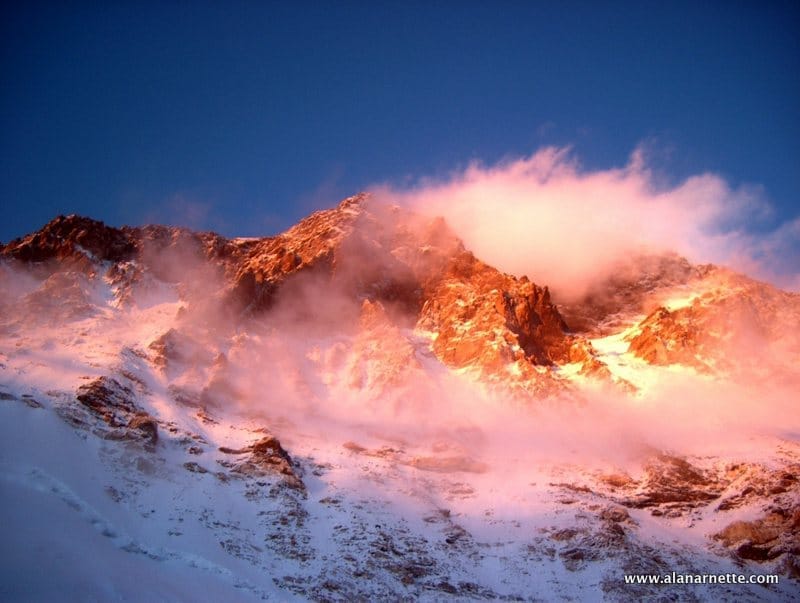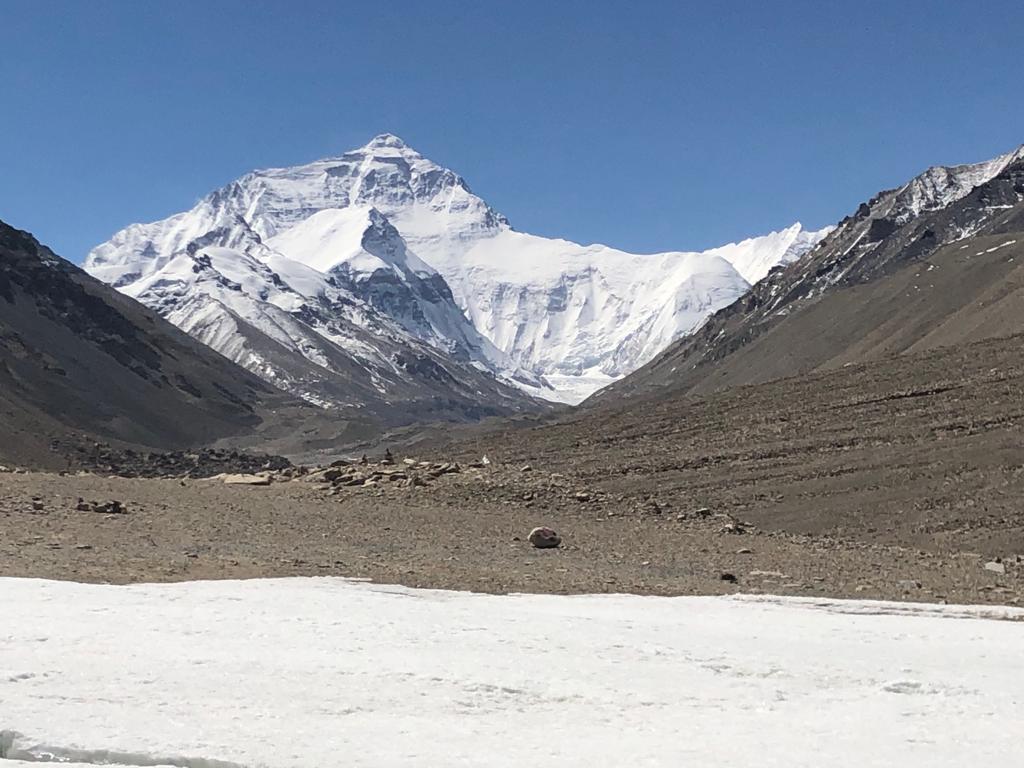The long-rumored Everest permit fee increase will now happen for the 2025 season. The permit fee for a foreigner will increase from USD $ 11,000 to $15,000. For a Nepali citizen, it will be $568. The increase is still in the proposal phase but appears to be pre-approved. As always, wait to see as Nepal will often float news rules or fees, measure the reaction, and then pull back or never implement the idea if there is bad publicity that may hurt tourism revenue.
Yubaraj Khatiwada and Rakesh Gurung of the mountaineering section of the Department of Tourism told the media that other fees will also increase, including insurance and other facilities for porters, high-altitude workers, and guides. Another change will be the requirement that operators must bring dead bodies down from the mountain.
Look for operators to increase their overall price by more than $4,000. The last time there was a price restructure, operators used it to raise prices higher than the permit increase. In 2023, the median price charged by Nepal operators was between $40,000 – $45,000, but some paid as low as $30,000 to $35,000. In 2023, Western operators had the highest prices on both sides (Nepal and Tibet). In 2023, their median was $70,000 from Nepal and $95,000 – $110,000 from Tibet by the two major Western operators, Furtenbach and Alpenglow. That said, you can still climb with a Western operator like International Mount Guides or Climbing the Seven Summits for around $50,000.
We don’t know yet if the fees for the other Nepal mountains will increase, but I am assuming so. I’ll update this post once we get more information.
Previous Nepal Changes
On January 1, 2015, Nepal’s Ministry of Culture, Tourism & Civil Aviation changed the decades-old pricing structure of 7 members for $70,000 or $10,000 per person. If only one person wanted a permit, the fee was $25,000. They changed the structure to a flat fee of $11,000 per person, with no minimums.
In a shrewd public relations move, they called it a price decrease because previously; it was $25,000 for an individual climber. Few climbers, if anyone, ever paid $25K for a single permit and formed teams to pay $10,000, so in reality, it was a price increase for 99.9% of those who climb Everest.
China Fees Last Rose in 2019
The Chinese increased climbing permits for Everest in 2019, eliminating a low-cost, single-person climb from Tibet for under $20,000. This change forces climbers to team up with at least three other members. This three-person requirement is not a big deal for independent climbers since many guides are glad to have you on their permit for a small fee and not provide any support.
An Everest climbing permit from the Chinese (Northside) is now between $15,800 and 18,000 per person for a team permit of 4 or more. This price includes transportation from the entry point in China (usually Lhasa or Zhangmu–Kodari) to base camp, hotels, liaison officer, trash fee, five yaks in, and four yaks out per member. In addition, there is an extra charge of $200 per day per person for time spent in Lhasa. If you want to bring a Nepali Sherpa to climb with you in Tibet, budget an additional $4,500 for each Sherpa’s “work permit,” as required by the CTMA, plus a salary of $5,000.
The Tibet side is more complicated for evacuation insurance since a centralized team performs all on-mountain rescues. The rescued climber is on the hook for unspecified and unlimited fees. Of critical safety importance, helicopters may not be used under any circumstances but are rumored to begin in the next few years, maybe by 2024. It would be wise to double-check everything with your provider to understand the details when climbing in China.
More Crowds, More Deaths?
The fear of long-time Everest watchers is that a significant permit increase will price out low-end climbers who perhaps cannot afford an additional $4,000 to $6,000 to climb Everest. If the operators pass on these increases, I expect the new “low-end” to be at least $40,000, and that’s a huge amount of money for many people, especially the young climbers without sponsors.
Thus the price increase could amplify a current trend of older Everest climbers, many from Japan, the US and Europe. China and India had the 139 2023 climbers on Everest; with this increase, I expect to see the Indian market significantly reduce, and perhaps the Chinese as well.
Cosmetic Changes (and Filling the Coffers)
While the price increase doesn’t bother me that much, I remain frustrated that Nepal refuses to address the real problem on the mountain: safety. There were seventeen deaths of Everest climbers in 2023. I estimate that at least ten were preventable based on the climber’s experience and the operator’s practices. To be clear, many officials in the Nepal government will benefit from this price increase.
I asked Phil Crampton of Altitude Junkies about the government’s oversight in general. He feels there is little incentive for Nepal to make meaningful changes. “I don’t think Nepal really cares who’s climbing on the hill these days. It’s all about the money received for permits, silly Liaison Officers expenses and the bribes they receive from the Nepal agencies so they can secure a climbing permit.”
There are obvious ways to address safety that would have little impact on revenue. Modeling best practices from other mountains like Alaska’s Denali or Argentina’s Aconcagua, safety could be drastically increased and lives potentially be saved by stationing a permanent rescue team at Camp 2 for the entire season, as they do Denali. Also, rotating “rangers” at South Col to watch for theft and serve as a deterrent to potential bad actors while being available for rescues.
Nepal has previously suggested stronger experience requirements for permit seekers, noting that perhaps part of the reason for deaths and missing climbers was partly because of inexperience. So maybe it’s time to institute a requirement that every Everest aspirant has summited at least a 7000-meter (23,000-foot) peak. China requires any Chinese citizen to have summited an 8000-meter peak before trying Everest from Tibet. They don’t have a similar requirement for foreigners.
Another safety measure could allow helicopters to ferry fixed rope supplies, but not climbers, to C2, thus reducing the number of trips through the Icefall for the Sherpas. Three Sherpas died in 2023 carrying gear to fix ropes higher on the mountain. Their lives could have been saved by using helicopters. Also, it requires that every foreigner and Sherpa carry a GPS tracking device that would make finding them faster and safer for rescuers.
Reducing the number of permits would directly reduce potential crowds and trash but would reduce revenue, so it is unlikely to occur. Similarly, reducing the number of Sherpas allowed to support each climber would reduce mountain traffic and encourage more self-sufficient clients. However, operators would argue that more Sherpas make climbing safer for their clients.
Nepal has a medical requirement, but it’s unclear how effective or enforced it is. Requiring a complete physical, including a stress test, for every climber over fifty could help find potential health issues.
Pakistan Opportunities
By the way, Pakistan could learn from the mistakes Nepal has made by mismanaging their mountains for decades by implementing these same procedures. Perhaps that would have saved Mohammed Hassan, 27, life on K2 on July 27, 2023. He was inexperienced, improperly outfitted, and not supervised. While efforts were made to save him, anyone who has climbed above 8000 meters knows while not impossible; it’s very dangerous and technically difficult to rescue a person at those altitudes.
Deaths have occurred climbing mountains since it began in 1760 near Chamonix, France. The sport has grown exponentially in popularity and today pulls in big money for governments, operators and supporting businesses while feeding the dreams and egos of climbers across the globe. Since the sport has turned into mass-market tourism, the safeguards that go with the industry need to be implemented. People will still die, but it will save perhaps the ones that could be saved.
Stay Tuned!
Let’s see how this price increase developed. It is scheduled for 2025, and that’s a lifetime in Nepal politics.
Climb On!
Alan
Memories are Everything




